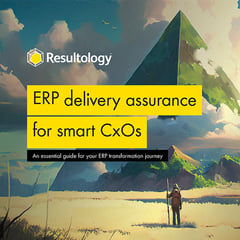I might not look like it, but I’m a vegan.
I’ve been that way for about 3 years, and more than 28 years a vegetarian before that.
I gave up meat on my wife’s birthday, a long time before being veggie became fashionable.
When we lived in London and didn’t have kids we would push the boat out for special occasions.
On this occasion I was sat in the Ritz Hotel, London staring at a full English breakfast, trying to convince myself that I could eat it without gagging.
In the end I gave up, sent it back, and ordered a continental.
Since that fated day, it's all been good from my perspective.
It was tricky to start with though, trying to find new or different things to eat, and replacing the meat in the meat and two veg.
Despite what my mum told me I didn’t get oily skin and come out in boils. In fact, my diet and my health has gone from strength to strength.
What hasn’t changed during the past 30 years has been the questions I get asked when people find out I’m veggie or now vegan.
The first question (if you are veggie or vegan please feel free to nod and groan) is ‘so where do you get your protein?'.
Once we establish that it's the same place as gorillas, elephants, cows, etc., (plants), we move on to the next round of questions.
‘But don’t you miss bacon?’, ‘How about a juicy steak’, and so on.
The French (I live in France now) are even more incredulous.
After the ‘protein’ question (somethings are universal) I normally get a list of all the delicious (?) things I can no longer eat. If there’s a group of French people it can often turn into a bit of a competition to see how long the list can get…
So I got to thinking, after 30 years of eating the most wonderful variety of deliciously mouthwatering and nutritious foods, I am still defined by what I don’t eat.
Imagine being defined by what you don’t do?
Instead of “Have you met Simon, he’s a really nice person” you were introduced as “Here’s Simon, he’s not an astronaut”.
But as a management consultant with over 20 years experience of SAP programmes under my fake leather belt, it never ceases to amaze me how many business users choose to define their new system by what it can’t do.
“Our old system was bespoke - it did everything we wanted it to.”
“The new system can’t do A, B, C, ….”
“It won’t let us do X, Y, Z .…….”
Helpful?
No, but it is understandable.
Letting go of the past and signing up to a different future is the perennial user adoption challenge - but should we blame our business users?
Think about the process we typically ask them to follow and put yourself in their position.
We, the programme, take our new design, our new solution, and impact assess it against their current ways of working.
The objective?
To highlight all the differences between the new solution and the old system or process. The same system or process that the business typically knows and loves.
What do we do with the outputs? Capture them all as actions or questions to be addressed or mitigated ahead of go live.
Rank them low, medium, high, and critical.
Report on them every month, then weekly, then daily as you approach go live.
We make the number of critical and highs exit criteria for the next phase - make them 'go / no-go' criteria - never forgetting that the purpose is to address problems.
Just think about the language:
“work around”
“open question”
“Problem”
“gap”
When was the last time you saw a ‘fit' or 'exceed' tracker - something that was celebrated on a monthly, weekly, and daily basis in the lead up to go live?
How about capturing those benefits as low, medium, high, and exceptional?
- Forget about mitigate - How about celebrate?
- Forget workaround - How about working like a dream?
Not to be outdone, on my current programme we have a tracker that lists out all of the differences, potential problems and open questions.
It highlights those differences that we think will require a manual work around to allow the business to carry on working the way they do now.
But we are also very fortunate - the business supports the programme by seconding some of its brightest talent to the programme team.
A couple of weeks back I was inspired by a quote in an email from a new secondee from the business.
Tasked with reviewing the business readiness action tracker he took it upon himself to start following up with the stakeholders. ‘I've already closed one’ he exclaimed proudly. Even better than that, it turns out:
“SAP will actually remove an existing manual workaround, so a great win for the business.
I’m going to suggest we start highlighting where the solution makes things more efficient.
I think it could help the business to think about the solution more positively.
I’m finding we have many areas that will be a jump forward, but much of the discussion is where the solution takes us backward.”
Wow! I could not have put it better myself.
Giving up the old is painful and anything new is different.
It can be scary, it can be difficult, and it's not made any easier when it’s someone else’s idea.
But sometimes, it can improve things.
When you’re making changes for the right reasons it should make things easier, quicker, and cheaper.
It can transform a business for the good.
There is no big secret to user adoption.
- It's about meeting people where they are at and then finding a way to get them inspired to log on and use their new system.
- It's about acknowledging how they feel about the present and about the future.
- It’s about asking them to suspend judgement and helping them change their perspectives.
- It’s about encouraging them to see problems as opportunities.
Ultimately, it's about getting them in the mindset to just have a go.
Some of it will be a backward step - particularly if they are on the receiving end of a global one size fits all template.
But most of it will be better.
They might need to give it a few goes until they get the hang of it, but pretty soon they will be left wondering how they coped before.
Maybe our role as consultants, project managers and programme directors is to suspend our judgment, change our perspectives and start talking about the art of the possible with our new solution.
Yes, we can still offer apologies for the things it will change or limit in the current ways of doing things, but let us make no apology for the benefits and opportunities that it opens up.
Let’s stop thinking in terms of implementation and start thinking in terms of inspiration. Stop pushing the business and start inspiring them to pull.
What's the worst that can happen?
Reflecting back to my breakfast at the Ritz, I had a head start on many of our business users.
I was frustrated by the status quo in the extreme.
I got to the point where there were simply too many reasons not to change, but it was difficult because almost everyone I spoke to reminded me of all the things I would miss.
Eating out would never be the same - and neither would eating in for that matter.
But after 30 years, I can honestly say I haven’t missed that that old way of eating - the opposite in fact.
I’ve eaten some fabulous food, discovered new ingredients, new recipes, and I am definitely a better cook!
And that’s the attitude we need to instil into the business when it comes to SAP adoption.
Stop worrying about the things you will lose and instead focus on all the brilliant things you will gain.
If you need support on SAP adoption, change management, or any other aspect of your SAP programme we can help.
Contact us today to get started.












